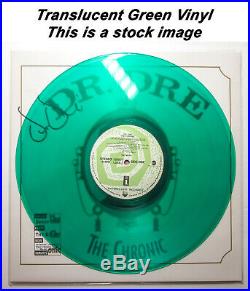
His debut album, 1992’s The Chronic is an imaginative crusade with half-truths so vibrant they blurred the lines of what was real. In that time, Dre established himself as not just a peerless producer but a visionary. The Chronic became that cornerstone achievement, kicking off a historic four-year run that ended with the death of the label’s other major star, Tupac Shakur. On top of that, neither he nor Suge had much of a business acumen, and they were hemorrhaging cash.ĭeath Row was ostensibly up and running with a master architect at the helm, but the young label needed a big victory upon which to build its empire. He was accused of a savage, public assault by journalist Dee Barnes and another assault on a police officer during a 50-person brawl he allegedly started. Five of the eight albums Dre produced for Ruthless from 1987 to 1991 went platinum, but he was a volatile figure prone to violence. Plagued by legal battles and beset with a number of open court cases, nobody would touch him. Dre was the biggest producer in hip-hop music, a pioneer drawing comparisons to Quincy Jones and Phil Spector he was also its most unemployable one. Eventually, Suge got his way: Dre was no longer a Ruthless artist, and Death Row Records was born. The documents weren’t deemed legally binding, but the wheels were in motion. He told Eazy he had N.W.A.’s manager Jerry Heller tied up in a van before offering a final warning: “We know where your mother lives.” With that, Eazy signed. Suge delivered contract releases for several Ruthless artists and planned to squeeze Eazy into signing them so he could poach the artists for the fledgling label he was starting. On April 23, 1991, Eazy-E went up to the studios at Solar Records where he was greeted by Suge and a small entourage of men with pipes and Louisville sluggers. All that was standing in his and Suge’s way was Eazy. album, 1991’s Niggaz4Life, and he wanted out so he could finish work on his solo material. Dre was already done mastering the final N.W.A. With an eye on becoming a music mogul, Suge saw Dre as his meal ticket. He’d been hanging around Ruthless as the D.O.C.’s bodyguard and had grown close to Dre during his conflict with the label.

But while the industry grows faster than the plants itself, discrimination is the elephant in the room,” Tinsley writes.Pro football prospect turned hulking enforcer, Marion Knight, Jr., nicknamed Suge for the sweet sugar bear he was as a child, had a reputation for intimidation that was the stuff of industry myth: punching a guy through a closed door and dangling Vanilla Ice off a balcony. “The conversation around the plant has changed dramatically, mostly for the better, in post- Chronic life. “The Chronic represents an American ornament, an important chapter in the lineage of marijuana’s history,” writes Justin Tinsley at The Undefeated, while noting that a legacy of racism and disproportionately applied drug laws have resulted in many people of colour being barred from entering North America’s growing cannabis industry, which remains overwhelmingly white. The album has been criticized for its misogynistic and violent lyrics while also being regarded as one of the most influential albums of the 1990s.Įarlier this year, the album was archived in the Library of Congress by the National Recording Registry, a designation reserved for albums deemed “worthy of preservation because of their cultural, historical and aesthetic importance.” This advertisement has not loaded yet, but your article continues below.


 0 kommentar(er)
0 kommentar(er)
